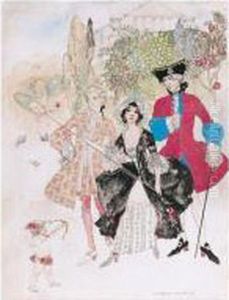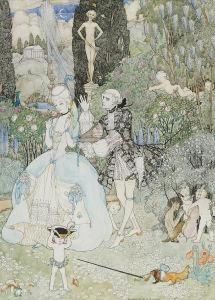Dorothy Carleton Smyth Paintings
Dorothy Carleton Smyth was a Scottish artist and designer, born in Glasgow in 1880. She was an influential figure in the Scottish art scene during the late 19th and early 20th centuries. Smyth was recognized for her talents from an early age and pursued her education in art with a passion that would define her career.
At the Glasgow School of Art, she honed her skills under the tutelage of Fra Newbery. Her education continued in Paris at the Académie Colarossi, a progressive art school that admitted women and was known for its liberal teachings, contrasting with the more conservative École des Beaux-Arts. Smyth's time in Paris exposed her to a diverse array of artistic movements and styles, which influenced her own eclectic approach to art.
Smyth's work spanned illustration, costume and theater design, and painting. She was particularly noted for her costume designs for the Glasgow theatrical scene. Her illustrations often graced the pages of contemporary magazines, displaying her versatility and ability to capture the aesthetic of the day. As a painter, Smyth focused on portraits and character studies, imbuing her subjects with psychological depth and vitality.
Smyth's career was marked by her dedication to women's rights and she was active in the suffragette movement. Her commitment to gender equality was reflected in her role as a mentor to other women artists and her advocacy for their inclusion in the art world. She was also a founding member of the Glasgow Society of Lady Artists in 1901, which provided support and exhibition opportunities for women artists.
Tragically, her promising career was cut short due to ill health. Dorothy Carleton Smyth passed away in 1933, leaving behind a body of work that, despite her premature death, made a significant impact on Scottish art and the role of women within it. Her legacy as an artist and advocate for women's rights in the arts continues to be remembered and celebrated.


